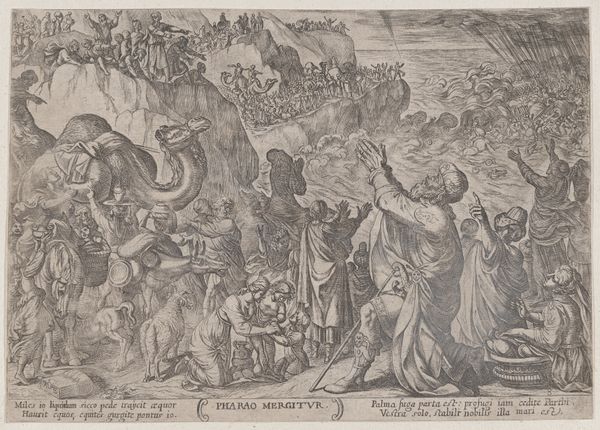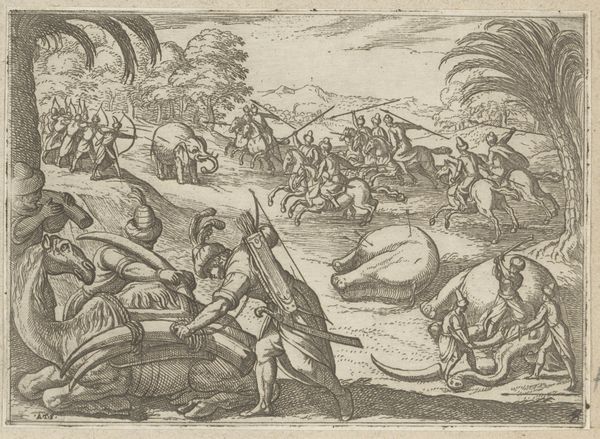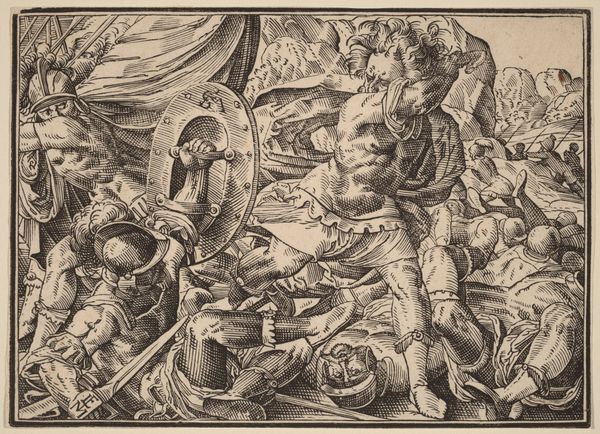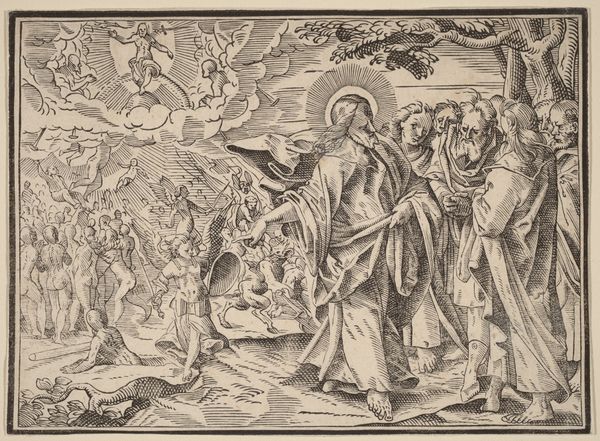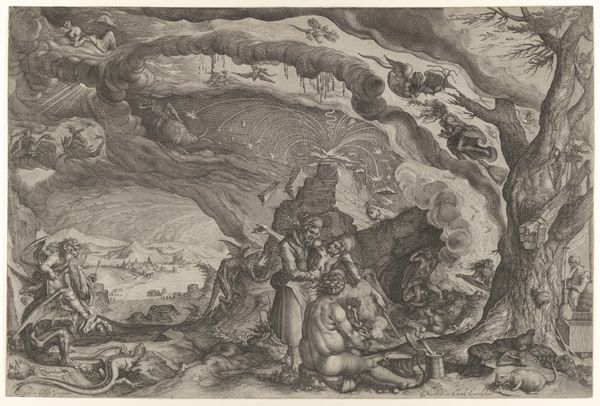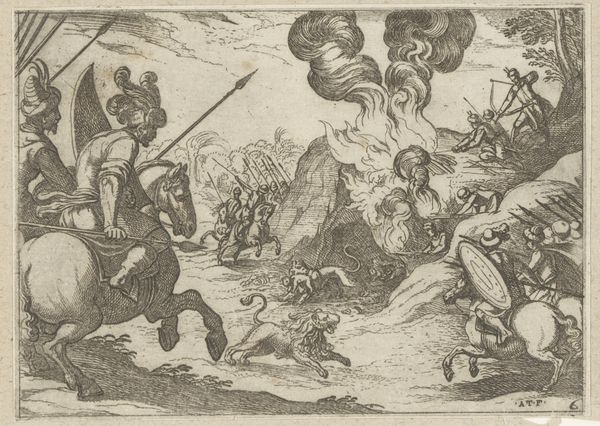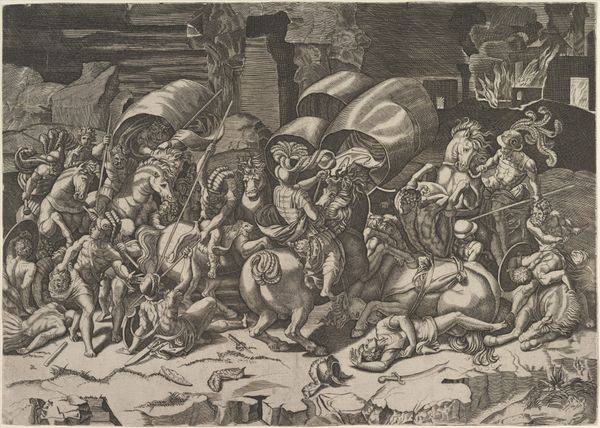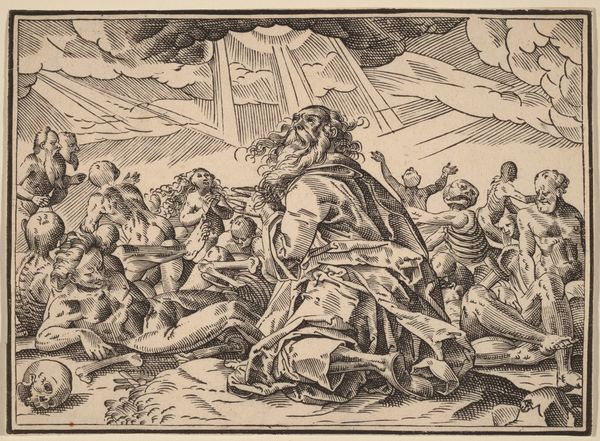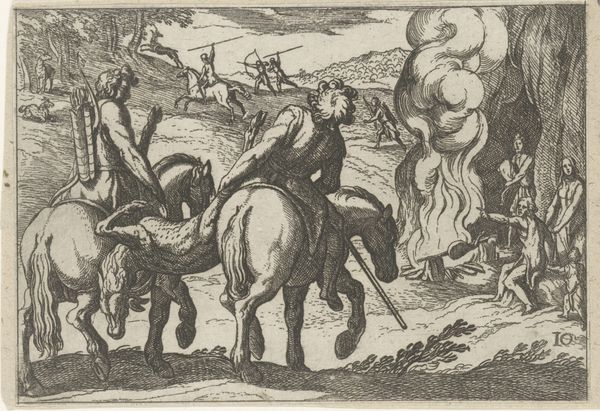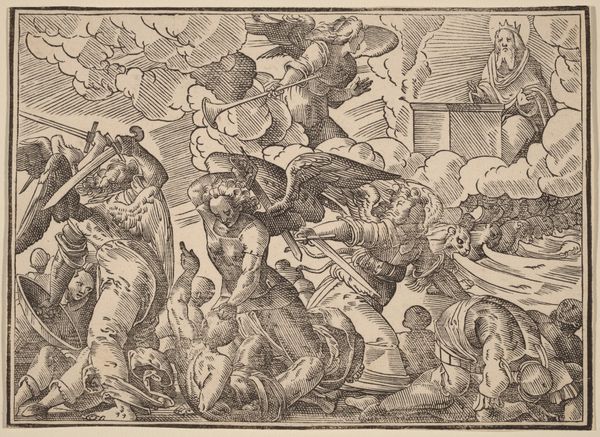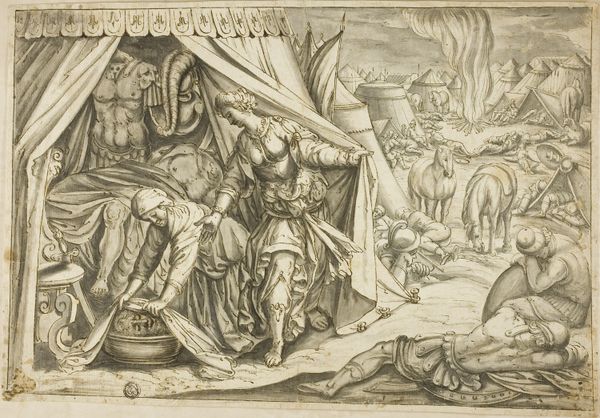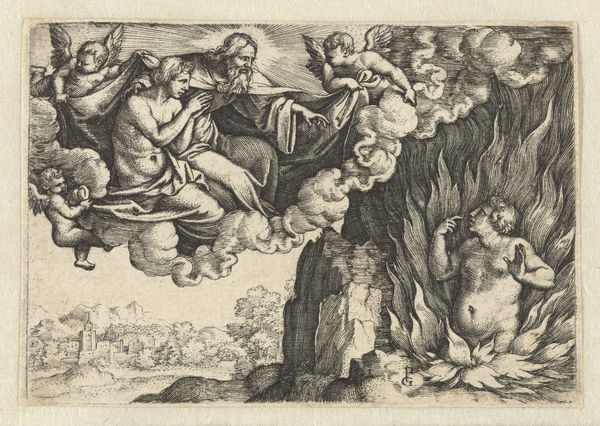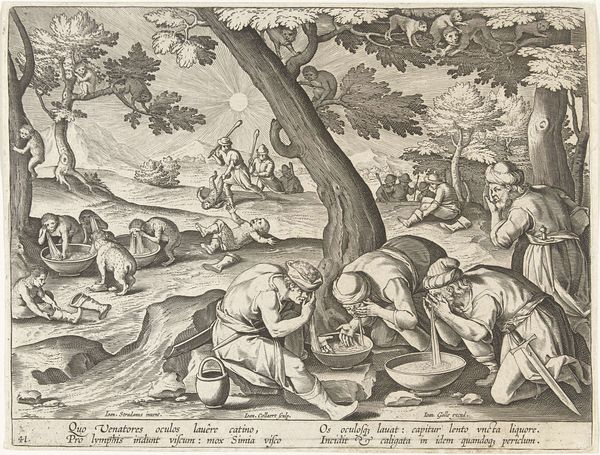
#
ink drawing
#
pen drawing
#
mechanical pen drawing
# print
#
pen illustration
#
pen sketch
#
junji ito style
#
pen-ink sketch
#
pen work
#
tattoo art
#
doodle art
Dimensions: sheet: 10.7 x 14.8 cm (4 3/16 x 5 13/16 in.)
Copyright: National Gallery of Art: CC0 1.0
Curator: What strikes me first about this piece is the dynamism; it's a small print, but it feels monumental. Editor: Indeed. This pen and ink drawing, possibly from 1630, is entitled "The Four Horsemen of the Apocalypse" and is attributed to Christoph Murer. Look closely at the method. See how Murer employs hatching and cross-hatching to create areas of shadow and depth. The texture is remarkable given the medium. The stark contrast only amplifies the image’s emotional impact. Curator: Agreed. The textures really jump out, especially if we consider Murer’s context. What would it mean for an early 17th-century audience to see these end-of-days monsters rendered in ink, likely disseminated via mass-produced prints? Was it simply didactic? Did it hold revolutionary potential? Editor: I think we also need to analyze the structural components that immediately grab our attention, like that serpentine multi-headed beast dominating the scene. Its twisting bodies create an energetic visual rhythm, one only accentuated by the cowering figures to the left. Curator: But these forms also suggest the very real power of religious authorities and the various principalities from which Murer would have sought patronage. Who would commission such a frightening scene? And what function would it serve? To remind folks of their mortality or to signal potential religious or political threats? Editor: Maybe both? By contrasting such dramatically different figure types—the complex horror of the beast with the relative stillness of those on the left—Murer has developed visual signs charged with emotional depth. Consider how they work together: fear versus submission, chaos versus order. It makes one consider the moment Murer conceived this scene; the sheer power, as it were, from nothing. Curator: And that is where our understandings diverge because the notion of something coming from “nothing” disregards so much material reality. I want to emphasize Murer's craft and technical skill while also thinking through distribution networks and cultural meanings as it circulated among viewers and consumers. Editor: And I hope to always come back to a reading of this artwork as it visually represents an interior, artistic vision! It's just so compelling in its own right, however situated it might be within early 17th-century anxieties and social relations.
Comments
No comments
Be the first to comment and join the conversation on the ultimate creative platform.
